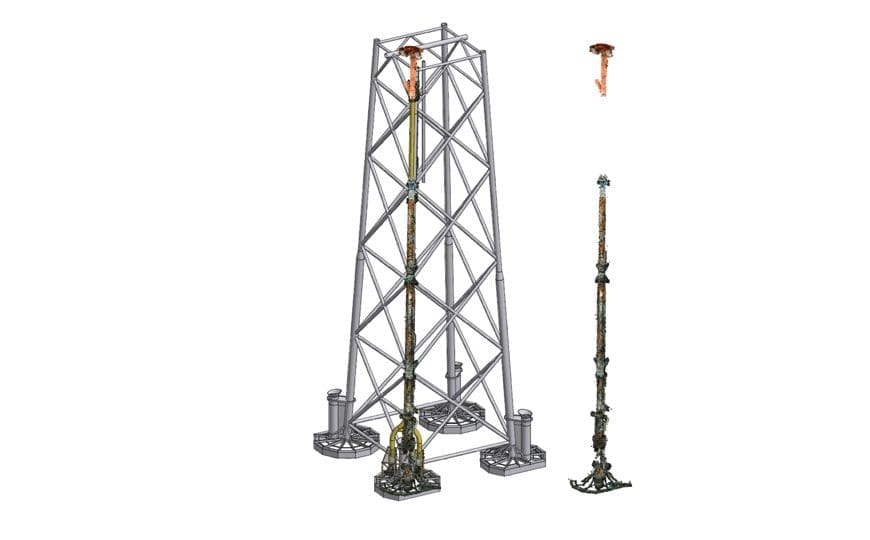Overview
Our customer, a global tier one energy services company, was responsible for designing and installing a new riser caisson for a platform which reached first oil in 1997 and is located in 105m water depth. The riser caisson was to be installed along the full length of the platform jacket leg as part of a field life extension project.
The aim of the project was to obtain accurate dimensions of areas where support clamps and guides were to be installed, and to identify any appurtenances that would interfere with caisson installation. This required the below and above-water areas of the jacket leg to be surveyed.
Solution
Ashtead Technology created a measurement-grade digital twin of the full length of the jacket leg, from the seabed mudmat to the topside substructure. The underwater segment of approximately 95m length was achieved using our ROV-based 3D Modelling photogrammetry system, using an Observation Class ROV.
The above-water jacket leg segment from the splash zone to the topsides substructure was photographed using an in-air camera system deployed via Rope Access Technicians (RATs) under the supervision of AT personnel.
The underwater and above-water models were combined using a taut-wire measurement between a topside and underwater location.
The end result was a full-length digital twin of the 130m long jacket leg, providing millimetre-accurate measurements of critical areas.
Benefits and value
The digital twin was used to update and validate existing drawings, and identify features not included in as-built records. This level of detail allowed the customer to complete the caisson design and installation procedures with a high degree of confidence that critical variables are understood and accounted for.
The digital twin was used to measure elements such as diameter, ovality, weld heights, planar deviations, and bolt hole dimensions. Elements such as anodes and other appurtenances were identified and measured for the engineers responsible for the caisson design to determine potential interference.
Ashtead Technology offshore personnel photographed the underwater length of the jacket leg in 11 hours, capturing over 20,000 photos, and requiring cleaning only in areas where critical measurements were needed. The above-water area was photographed by RATs in one shift, capturing approximately 1000 photos.
